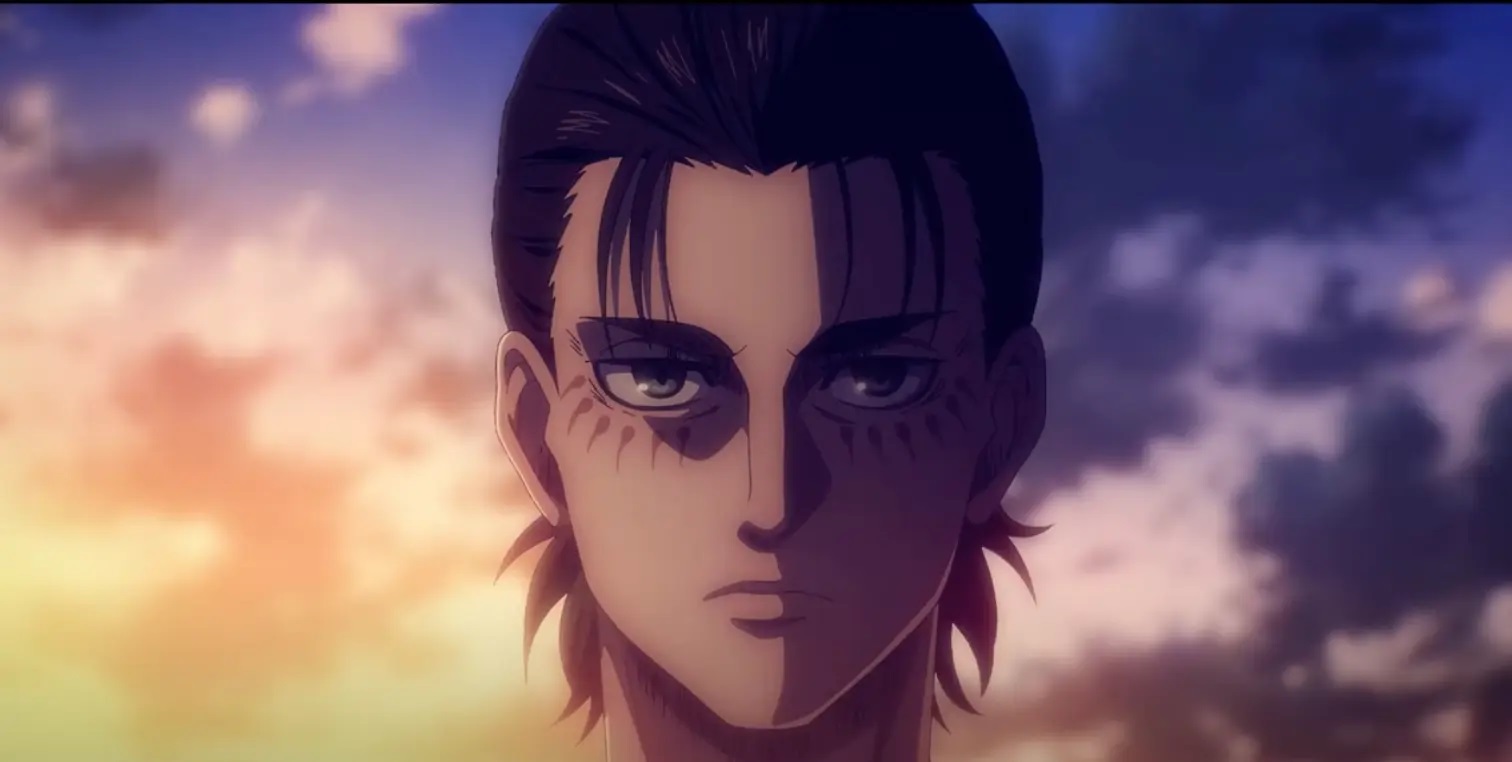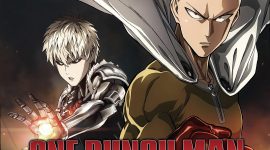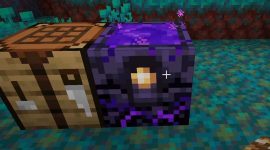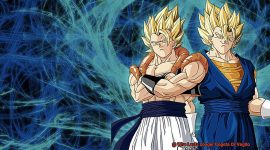
Since its explosive debut in 2013, Attack on Titan has ensnared fans worldwide with its heart-pounding action, gripping narrative, and mind-bending concepts. But here’s the burning question on everyone’s minds: Does the Attack on Titan anime faithfully follow its manga counterpart?
In this blog post, we’ll embark on a journey to dissect this age-old query, peering into the intricate web of similarities and deviations between anime and manga. From plot twists to character arcs and thematic explorations, we’ll unravel whether the anime truly captures the essence of its source material.
Plot Adaptation:
Contents
- 1 Does the Attack on Titan anime follow the manga?
- 2 Overview of the Manga Series
- 3 How Closely Does the Anime Adapt the Manga?
- 4 Visuals and Animation in the Anime
- 5 Expanding on Scenes from the Manga
- 6 Altered or Omitted Scenes in Later Seasons
- 7 Fans’ Perspectives on Adaptation Changes
- 8 The Subjectivity of Faithfulness to the Source Material
- 9 Conclusion
When it comes to storytelling, fear not. The Attack on Titan anime stays true to the manga’s core narrative. Both mediums follow Eren Yeager and his comrades as they wage war against towering Titans while uncovering dark secrets within their walls. Major plot arcs and pivotal moments align seamlessly between the two, ensuring an authentic experience for die-hard fans.
Character Portrayal:
One of Attack on Titan’s strengths lies in its diverse cast of characters, each with their captivating quirks. Thankfully, both the anime and manga do justice to these beloved personalities. Whether it’s Eren’s unwavering resolve or Mikasa’s indomitable spirit, viewers will find themselves deeply connected to these characters across both mediums.
Yet, be prepared for a few surprises. The anime occasionally amplifies certain traits or tweaks scenes for maximum impact—adding an extra layer of visual flair that enhances our engagement with these unforgettable heroes.
Exploring Themes:
Attack on Titan isn’t just about slicing through flesh-eating giants; it delves into profound themes like societal hierarchies and existential dilemmas. Rest assured, the manga and anime remain faithful in tackling these weighty topics head-on. Prepare to be challenged as you contemplate humanity’s darkest truths.
But here’s where the anime truly shines. Its stunning visuals, spine-tingling soundtrack, and immersive sound effects elevate these themes to new heights. The result? A mesmerizing experience that complements the manga’s storytelling prowess while forging its unique artistic path.
Does the Attack on Titan anime follow the manga?
Attack on Titan, a popular manga series created by Hajime Isayama, has captivated fans worldwide. Its success led to an anime adaptation that has gained equal acclaim. But does the Attack on Titan anime faithfully follow the manga?
Here, we will delve into the similarities and differences between these two mediums to provide fans with a comprehensive answer.
Following the Major Story Arcs:
The Attack on Titan anime stays true to the central story arcs and critical events of the manga. Fans can expect to witness their favorite moments come to life on screen. The plot structure, character development, and overall narrative are largely preserved in the anime, ensuring an immersive experience.
Differences in Pacing:
Due to time constraints and episode limitations, the anime may condense or shorten certain scenes from the manga. This faster-paced approach ensures a smooth flow of storytelling within limited episodes. However, it may result in excluding specific details or subplots from the manga.
Art Style and Animation Techniques:
The distinct art style of Isayama’s manga is skillfully adapted for animation in the Attack on Titan anime. Although there may be slight changes in character designs or aesthetic choices, the adaptation maintains a visually appealing and dynamic viewing experience.
Anime-Original Scenes and Filler Episodes:
The Attack on Titan anime occasionally introduces anime-original scenes or filler episodes to provide additional content and expand upon aspects of the story. These episodes are not directly based on the manga but offer fans more range from the series’ universe.
Overview of the Manga Series
If you’re searching for a manga series that will leave you on the edge of your seat, look no further than Attack on Titan. This epic saga, created by Hajime Isayama, has taken the world by storm with its gripping storyline, unforgettable characters, and jaw-dropping artwork.
As an expert in all things Attack on Titan, I’m here to give you an overview of this manga series that will captivate your imagination.
The Premise: Humanity’s Last Stand
In the lonely world of Attack on Titan, humanity faces its greatest threat yet – the Titans. These gigantic humanoid creatures have driven society to the brink of extinction. The story revolves around Eren Yeager, a determined young man who, along with his adoptive sister Mikasa Ackerman and their friend Armin Arlert, joins the military to fight against the Titans and uncover the truth behind their existence.
Attack on Titan keeps readers hooked from the very first page with a mix of action, mystery, and political intrigue.
The Characters: A Multifaceted Cast
One of the strengths of Attack on Titan is its diverse and complex cast of characters. From the fiery and determined Eren to the skilled and fiercely protective Mikasa, each character brings unique traits and motivations to the story.
Whether it’s the stoic Captain Levi or the intelligent Armin, every character plays a vital role in driving the narrative forward and keeping readers emotionally invested.
Success: A Global Phenomenon
It’s no surprise that Attack on Titan has become a global phenomenon. With millions of copies sold worldwide and critical acclaim from fans and critics alike, this manga series has captured readers’ hearts everywhere.
The success of Attack on Titan has also led to adaptations in various media forms, including an anime series that faithfully portrays Isayama’s vision, video games that allow fans to immerse themselves in the world of Titans, and even live-action films that bring the epic battles to life.
With its gripping storyline, complex characters, and stunning artwork, Attack on Titan is a manga series that should be noticed. Whether you’re a long-time fan or new to the series, the world of Titans awaits, ready to engulf you in its thrilling and thought-provoking tale.
So, grab your 3D Maneuver Gear and join Eren and his comrades as they fight for humanity’s survival. Trust me, you won’t be disappointed.
How Closely Does the Anime Adapt the Manga?
Attack on Titan, both the manga and anime, has captured the hearts of fans worldwide with its intense storytelling and breathtaking visuals. In this blog post, we will explore how closely the anime adaptation follows its manga source material.
We’ll gain a comprehensive understanding of the adaptation process by examining key aspects such as storyline, character development, art style, pacing, and fidelity to the source material.
Storyline:
The Attack on Titan anime faithfully preserves the manga’s major plot points, twists, and character arcs. While minor details or subplots may be omitted or condensed for time constraints, these changes are made to maintain a smooth narrative flow. Overall, fans can expect a faithful representation of the manga’s storyline in the anime.
Character Development:
The anime effectively captures the essence of the manga’s characters. Their personalities, motivations, and growth are well-portrayed on screen. However, due to the limitations of episode counts in an anime series, some character development moments or interactions from the manga may not be as explored as fans would like. Nevertheless, the anime does an admirable job of bringing the characters to life.
Art Style:
One of the most striking aspects of Attack on Titan is its distinctive art style. The anime faithfully replicates this art style, with detailed character designs and backgrounds resembling their manga counterparts. Additionally, the animation in the anime enhances the visual experience, elevating action sequences and intensifying the story’s overall impact.
Pacing:
While generally well-received, there may be instances where fans notice pacing deviations between the anime and manga. Scenes may be sped up or slowed down for dramatic effect or to maintain a consistent flow within episodes. These pacing adjustments enhance the viewing experience and ensure a captivating narrative.
Fidelity to the Source Material:
Overall, Attack on Titan’s anime adaptation maintains high fidelity to the manga. The core elements and major events remain intact, allowing the anime to capture the essence of the original story.
However, it’s essential to acknowledge that adaptations involve interpretation and creative choices. These choices appeal to a broader audience and create a unique viewing experience.
Visuals and Animation in the Anime
In the vast realm of storytelling, Attack on Titan stands tall like a colossal titan, captivating fans across the globe with its gripping narrative and awe-inspiring visuals.
The anime adaptation of this popular manga series has been praised for its stunning visuals and high-quality animation, which greatly enhance the viewing experience.
Let’s delve into the world of Attack on Titan and explore how its visuals and animation contribute to its greatness.
Faithful Adaptation of Artwork:
The Attack on Titan anime faithfully captures the dark and gritty atmosphere of the source material. The detailed backgrounds, devastated landscapes, and intricate gear used by the Survey Corps are meticulously recreated in the anime, staying true to the artwork from the manga.
Use of Color:
One standout aspect of Attack on Titan’s visuals is its use of color. The muted palette and desaturated tones create a sense of bleakness and despair, perfectly mirroring the post-apocalyptic world portrayed in the manga and anime. This color scheme adds depth to the storytelling and enhances the overall atmosphere.
Fluid and Impressive Animation:
The animation in Attack on Titan is fluid and visually impressive, particularly during intense battle scenes. The movement of characters, especially when using their vertical maneuvering equipment to fight against Titans, is smooth and exhilarating.
The animation brings the action sequences to life, immersing viewers in the heart-pounding battles.
Creative Visual Techniques:
The anime amplifies the impact of key moments with creative visual techniques. When characters transform into Titans, there is often a dramatic shift in art style and animation that effectively conveys their monstrous nature and power. These visual techniques heighten the intensity of these pivotal moments and add to the overall excitement of the series.
Attention to Detail:
Another notable aspect of Attack on Titan’s visuals is its attention to small details. Facial expressions, gestures, and body language are meticulously animated to convey emotions and add depth to the characters’ performances. This level of detail helps to enhance the overall storytelling experience and allows viewers to connect with the characters on a deeper level.
By combining faithful adaptation of artwork, creative visual techniques, and fluid animation, Attack on Titan creates a visually captivating transformation that brings the manga’s world to life. The meticulous attention to detail and stunning artwork further elevate the viewing experience, making it a must-watch for fans of the series.
Expanding on Scenes from the Manga
Attack on Titan, a manga created by Hajime Isayama, has garnered a massive following worldwide with its intense battles, emotional confrontations, and visually stunning scenes. As fans eagerly anticipate the anime adaptation, there is a burning question: How closely does the anime follow the original manga?
In this blog post, we will delve into the extent to which the anime faithfully reproduces scenes from the manga and explore how it expands upon them to create a unique viewing experience.
Staying True to the Source Material:
When comparing scenes from the manga to the anime, it is clear that the anime takes excellent care in faithfully replicating key moments, character designs, and settings. The animators ensure that fans can relive their favorite scenes dynamically and visually strikingly. The attention to detail in retaining the essence of each panel is commendable, allowing viewers to experience the same emotions and intensity depicted in the original manga.
However, Expansion is Key:
While the anime generally stays faithful to the source material, there are instances where it expands upon scenes from the manga. This expansion can take various forms, such as adding extra dialogue, extending fight sequences, or providing additional context to enhance the storytelling. These changes may deviate slightly from the manga’s specific panels or pacing but enrich the viewing experience and provide a more comprehensive understanding of the narrative.
Addressing Gaps and Ambiguities:
The decision to expand on certain scenes also helps address potential gaps or ambiguities in the manga. The anime offers a more cohesive and coherent storyline by incorporating additional details or explanations. This approach is precious for viewers who may need access to or knowledge of the original manga, ensuring they can fully immerse themselves in Attack on Titan.
Exploring New Dimensions:
Expanding on scenes from the manga allows the anime to explore new dimensions and perspectives. It enables the creators to delve deeper into character development and world-building or even introduce new story arcs that may not have been present in the manga. These expansions provide a fresh experience for manga readers and anime-only fans, making the anime adaptation feel like a distinct and valuable addition to the Attack on Titan universe.
Altered or Omitted Scenes in Later Seasons
If you’re a fan of the Attack on Titan manga and have followed the anime adaptation, you may have noticed that certain scenes have been altered or omitted in later seasons.
This is not uncommon in anime adaptations, as the process of translating a manga into an animated series often requires some changes to be made. In this post, we’ll take a closer look at why these alterations occur and how they impact the overall viewing experience.
Altered Scenes: Consistency and Pacing
One of the reasons why scenes may be altered in the Attack on Titan anime is to maintain consistency and pacing. The manga and anime are different mediums; what works well on paper may translate differently to the screen. Certain dialogue exchanges and character interactions may be modified in the anime to ensure a smooth story flow for viewers.
While this can sometimes result in the loss of nuanced details or character development, it is done to keep the pacing consistent and maintain the overall flow of the narrative.
Omitted Scenes: Condensing the Storyline
In addition to altered scenes, there are instances where entire scenes or subplots are omitted from the anime adaptation. This is often done to condense the storyline and focus on the main narrative arcs.
In Season 2 of Attack on Titan, for example, several side stories and minor character developments were left out. While this may disappoint fans who enjoyed those particular aspects of the manga, it is necessary for creating a cohesive and concise animated series.
Availability of Source Material
Another factor that contributes to altered or omitted scenes is the availability of source material. The Attack on Titan manga is an ongoing series, with new chapters regularly released. When producing recent seasons of the anime, there may be incomplete storylines or unrevealed plot points in the manga.
To avoid spoilers or inconsistencies, certain scenes may need to be revised or excluded until they can be properly incorporated into future seasons. This ensures that the anime remains faithful to the manga while providing a satisfying viewing experience for fans.
The Big Picture: Staying True to the Source Material
Despite these alterations and omissions, it is important to note that the Attack on Titan anime remains true to the manga’s overall storyline and significant plot points. The core events and character developments are faithfully replicated, ensuring that fans of the manga can still enjoy the animated adaptation. While there may be some differences in specific scenes or details, these changes are made with careful consideration and to create a unique and enriching viewing experience.
Fans’ Perspectives on Adaptation Changes
Attack on Titan is a series that has captivated fans worldwide with its gripping storyline, intense action, and complex characters. As with any adaptation, changes are inevitable when transitioning from the manga to the anime. These changes have sparked many perspectives among fans, creating a rollercoaster of emotions.
The Need for Speed: Pacing Differences
One of the most hotly debated topics among fans is the pacing of the anime. Some fans argue that certain story arcs are rushed, leaving out important details or needing to give them more attention. Conversely, others appreciate the faster pace as it keeps them engaged and prevents unnecessary dragging of plot points.
Visuals: Love at First Sight or Missed Connections?
The visual representation of characters and scenes is another area of contention. Fans may compare the anime’s portrayal to their mental images while reading the manga, leading to mixed reactions. Some fans find the anime’s interpretation stunning, while others feel let down if their favorite characters don’t match their imagination or if iconic scenes are altered.
The Cut Scene Dilemma: To Include or Exclude?
In adaptations, specific scenes or events often get condensed or omitted due to time constraints. This can disappoint fans who were eagerly anticipating seeing particular moments from the manga brought to life in the anime. However, some fans understand the limitations and recognize that adaptations require adjustments.
Embracing Change: Finding Value in Adaptation Changes
Despite the criticisms, not all fans have negative opinions about adaptation changes. Some appreciate when the anime adds new content or explores certain aspects more deeply than the manga. These changes can bring a fresh perspective and enhance the viewing experience for fans.
The Subjectivity of Faithfulness to the Source Material
Fans of Attack on Titan have been taken on a wild ride of emotions when it comes to the adaptation changes in the anime. In this blog post, we will explore the subjectivity of faithfulness to the source material and how it affects the viewer’s experience. From pacing differences to visual interpretations, we will delve into the rollercoaster of emotions that fans have experienced.
Pacing Differences:
The pacing is a significant difference between the Attack on Titan anime and manga. The anime often compresses multiple chapters into one episode, leading to a faster-paced narrative. While some fans appreciate this fast-paced approach, others feel it sacrifices crucial character development and world-building.
Visual Interpretations:
Another aspect that contributes to the subjectivity of faithfulness is the visual interpretation of the anime. The manga’s distinct art style, characterized by detailed linework and dark shading, is only sometimes replicated faithfully in the anime. Some fans embrace the unique animation style, while others argue that it fails to capture the gritty atmosphere of the manga.
Cut Scenes:
One common frustration among fans is the omission or alteration of scenes from the manga in the anime adaptation. While this is often done to fit time constraints or maintain a consistent pace, it can lead to disappointment for fans looking forward to seeing their favorite moments brought to life.
Adaptation Changes:
The most subjective aspect of faithfulness is how fans perceive adaptation changes made in the anime. Some changes, such as additional scenes or altered story arcs, can be exciting additions that enhance the overall narrative. However, others may view these changes as unnecessary deviations from the source material.
Conclusion
In conclusion, the Attack on Titan anime stays true to its manga counterpart.
The seamless adaptation of the storyline, characters, and art style showcases a meticulous effort to recreate Hajime Isayama’s masterpiece faithfully. Fans can rest assured that they will experience the same heart-pounding action, intense emotions, and shocking plot twists in both mediums.
The attention to detail in capturing every panel and dialogue from the manga is commendable, leaving viewers with a sense of satisfaction and fulfillment.


